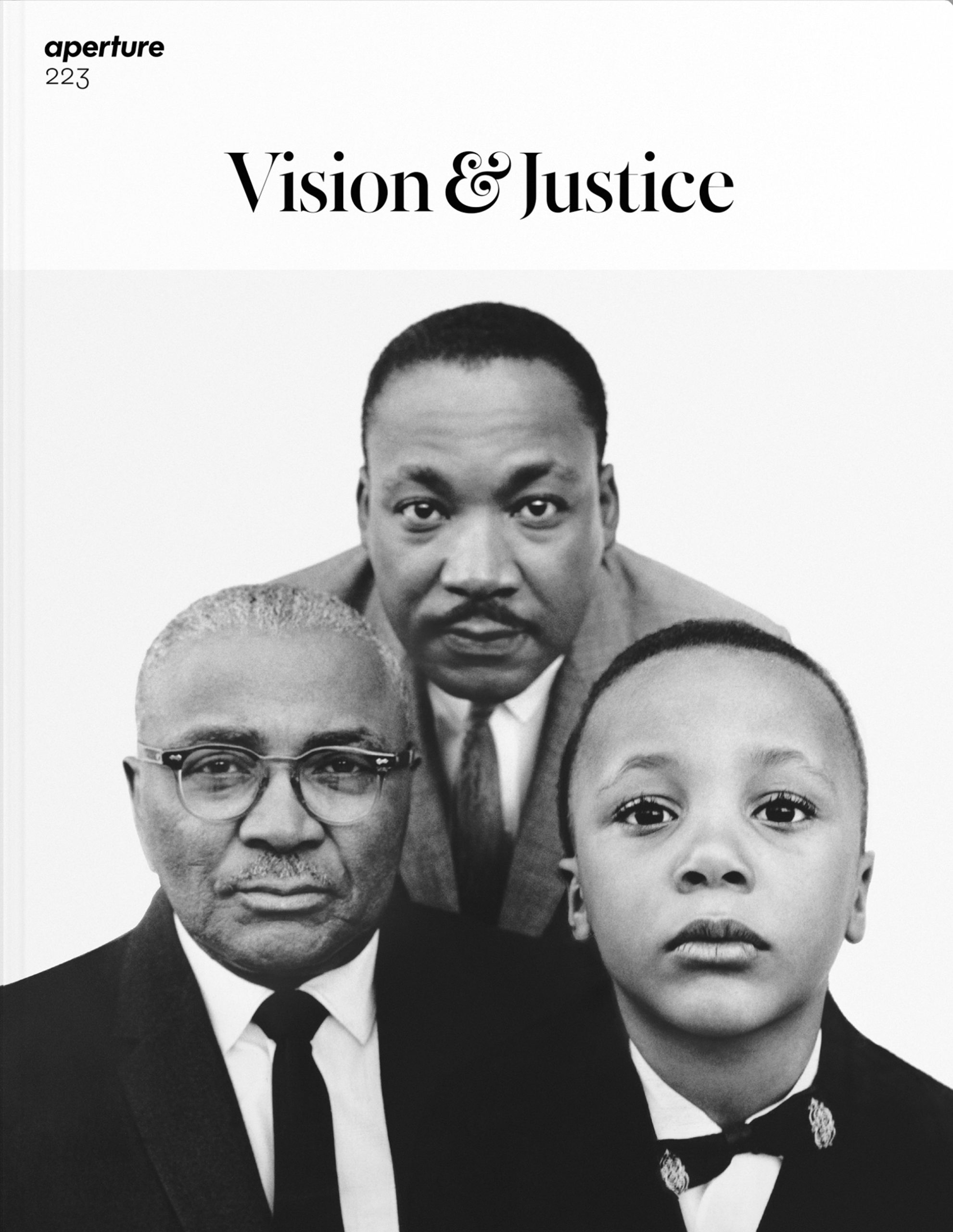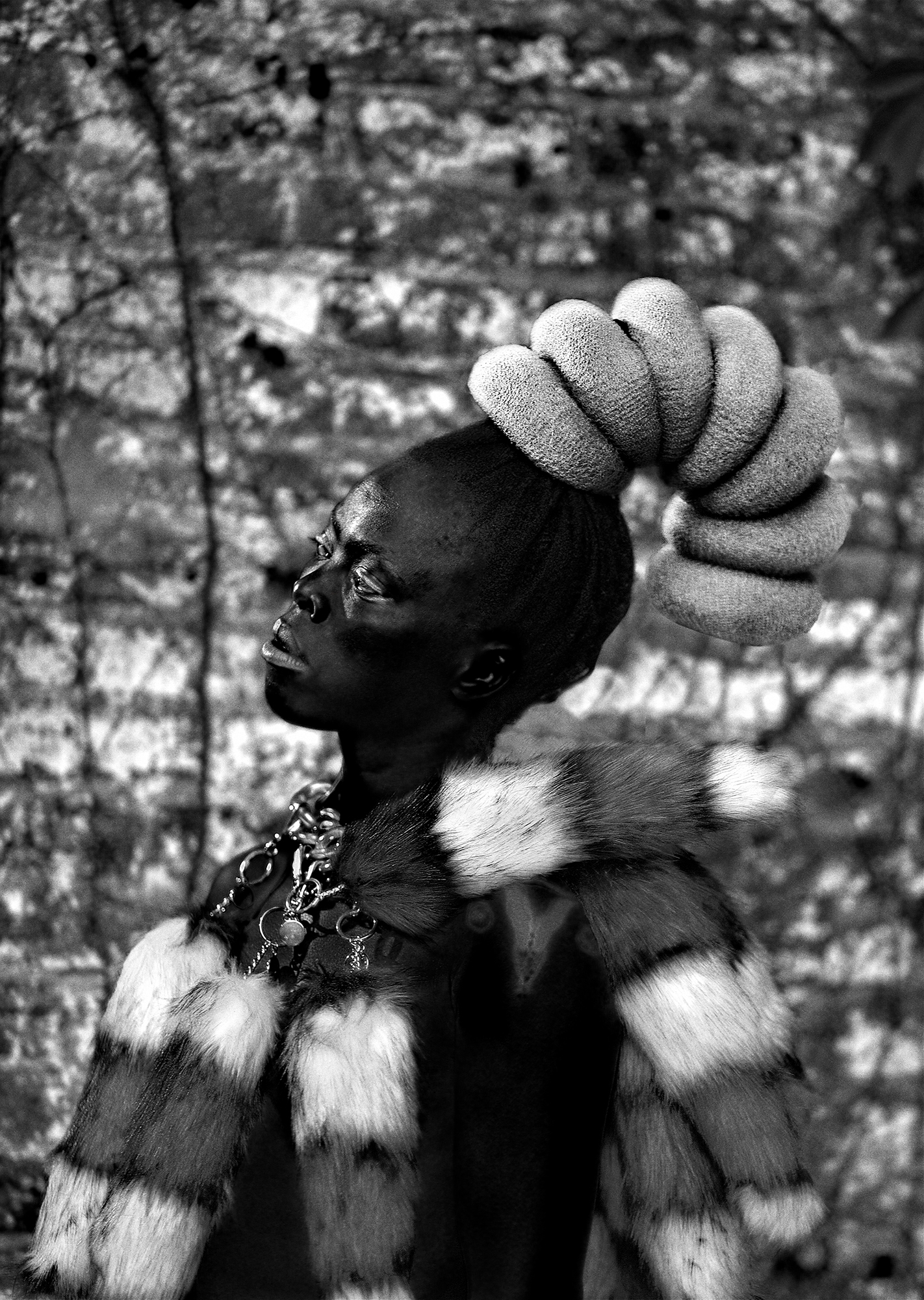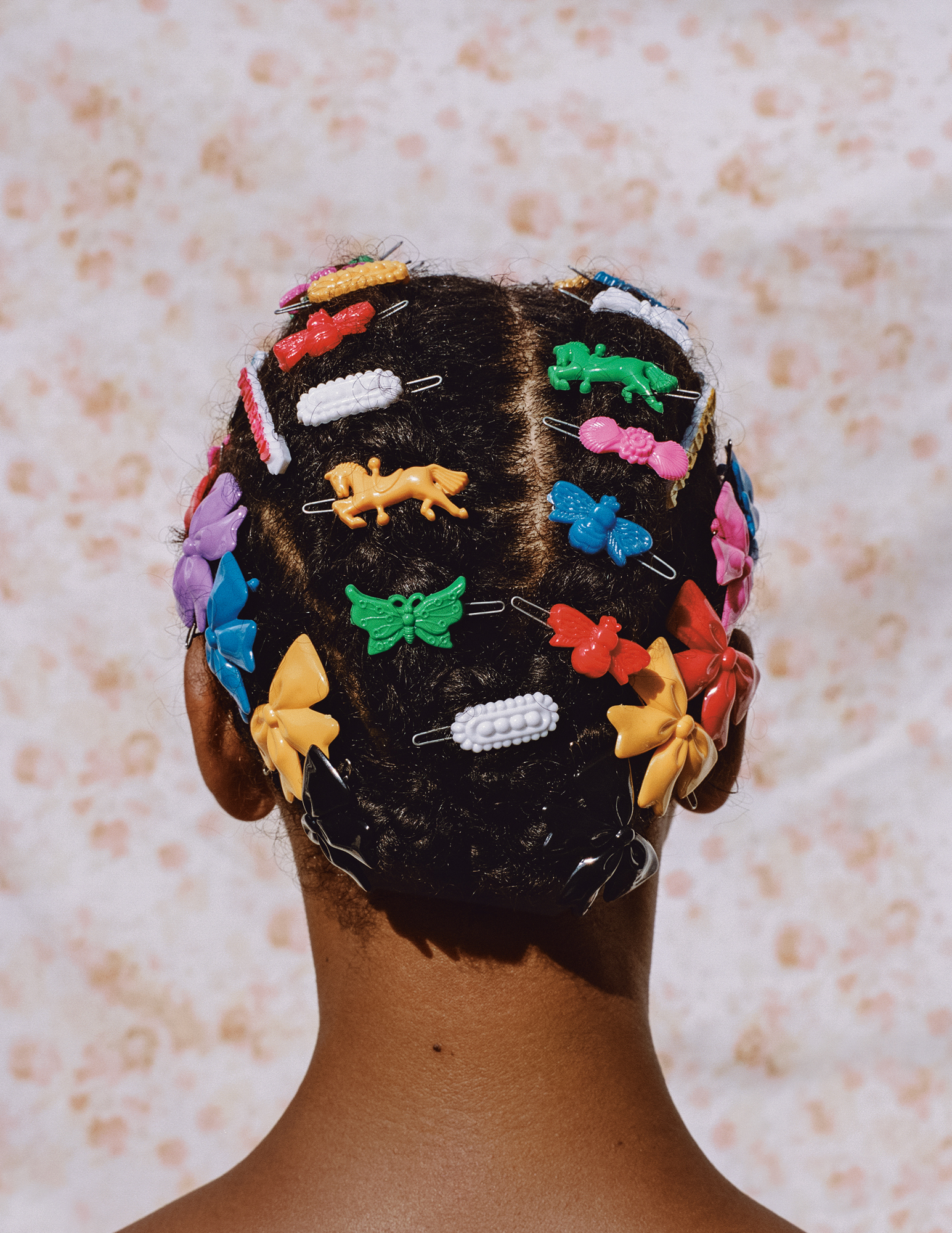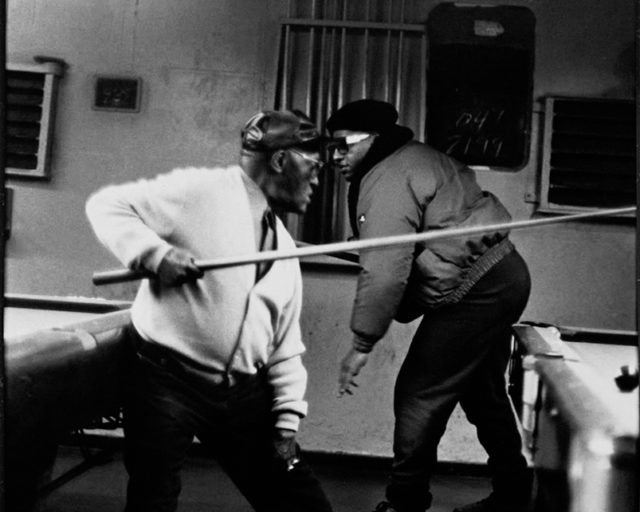7 Photobooks That Consider Black Lives and Artistic Visions
Kwame Brathwaite, A school for one of the many modeling groups that had begun to embrace natural hairstyles in the 1960s, ca. 1966
Courtesy the artist and Philip Martin Gallery, Los Angeles

Courtesy the artist and Jack Shainman Gallery, New York
To Make Their Own Way in the World: The Enduring Legacy of the Zealy Daguerreotypes (September 2020)
Copublished by Aperture and Peabody Museum Press
To Make Their Own Way in the World is a profound consideration of some of the most challenging images in the history of photography: fifteen daguerreotypes of Alfred, Delia, Drana, Fassena, Jack, Jem, and Renty—men and women of African descent who were enslaved in South Carolina. Photographed by Joseph T. Zealy for Harvard University professor Louis Agassiz in 1850, the images were rediscovered at Harvard’s Peabody Museum in 1976.
This volume features essays by prominent scholars who explore topics such as the identities and experiences of the seven people depicted in the daguerreotypes, the close relationship between photography and race in the nineteenth century, and visual narratives of slavery and its lasting effects, as well as the ways contemporary artists have used the daguerreotypes to critique institutional racism today. With over two hundred illustrations, including new photography by Carrie Mae Weems, this book frames the Zealy daguerreotypes as works of urgent engagement.
To Make Their Own Way in the World is firmly grounded in the events shaping American lives today. Instead of supporting Agassiz’s pseudoscientific notions about white supremacy and racial hierarchies (as was their original intent), the daguerreotypes provoke wide-ranging interpretations and raise critical questions about representation and identity. “At this moment and in these divided states of America, perhaps more than at any time since their rediscovery in 1976,” Molly Rogers writes, “the daguerreotypes of Jem, Alfred, Delia, Renty, George Fassena, Drana, and Jack command our attention, demanding that we look closely, listen intently, and speak out—however difficult this may be—giving voice to all that we have learned.”

Courtesy the artist and Philip Martin Gallery, Los Angeles
Kwame Brathwaite: Black Is Beautiful (2019)
Kwame Brathwaite’s photographs from the ’50s and ’60s transformed how we define Blackness. Using his photography to popularize the slogan “Black Is Beautiful,” Brathwaite challenged mainstream beauty standards of the time that excluded women of color. Born in Brooklyn and part of the second-wave Harlem Renaissance, Brathwaite and his brother Elombe Brath founded the African Jazz-Art Society & Studios (AJASS) and the Grandassa Models. AJASS was a collective of artists, playwrights, designers, and dancers; Grandassa Models was a modeling agency for Black women. Working with these two organizations, Brathwaite organized fashion shows featuring clothing designed by the models themselves, created stunning portraits of jazz luminaries, and captured behind-the-scenes photographs of the Black arts community, including Max Roach, Abbey Lincoln, and Miles Davis.
Until recent years, Brathwaite has been under-recognized. In 2019, Aperture published the first-ever monograph of his work, Black Is Beautiful. “To ‘Think Black’ meant not only being politically conscious and concerned with issues facing the Black community,” writes Tanisha C. Ford, “but also reflecting that awareness of self through dress and self-presentation. They were the woke set of their generation.”

Courtesy the artist and Aperture
Ming Smith: An Aperture Monograph (November 2020)
Copublished by Aperture and Documentary Arts
Ming Smith’s poetic and experimental images are icons of twentieth-century African American life. Smith began experimenting with photography as early as kindergarten, when she made pictures of her classmates with her parents’ Brownie camera. She went on to attend Howard University, Washington, DC, where she continued her practice, and eventually moved to New York in the 1970s. Smith supported herself by modeling for agencies like Wilhelmina, and around the same time, joined the Kamoinge Workshop. In 1975, Smith became the first Black woman photographer to have work acquired by the Museum of Modern Art, New York.
Throughout her career, Smith has photographed various forms of Black community and creativity—from mothers and children having an ordinary day in Harlem, to her photographic tribute to playwright August Wilson, to the majestic performance style of Sun Ra. Her trademark lyricism, distinctively blurred silhouettes, and dynamic street scenes established Smith as one of the greatest artist-photographers working today. As Yxta Maya Murray writes in Ming Smith: An Aperture Monograph, “Smith brings her passion and intellect to a remarkable body of photography that belongs in the canon for its wealth of ideas and its preservation of Black women’s lives during an age, much like today, when nothing could be taken for granted.”

Courtesy the artist
Lyle Ashton Harris: Today I Shall Judge Nothing That Occurs (2017)
Throughout the late 1980s and ’90s, a radical cultural scene emerged in cities across the globe, finding expression in the galleries, nightclubs, and bedrooms of New York, London, Los Angeles, and Rome. As a young artist experimenting with different artistic mediums at the time, Lyle Ashton Harris began obsessively photographing his friends, lovers, and individuals who were, or would become, figures of influence, including Nan Goldin, Stuart Hall, bell hooks, Catherine Opie, and Marlon Riggs. Harris’s photographs offer a raw, authentic portrait of the cultural and political communities that defined an era and continue to resonate to this day.
In the 2017 volume Today I Shall Judge Nothing That Occurs, the artist’s archive of 35 mm Ektachrome images is presented alongside personal journal entries and recollections from artistic and cultural figures. It offers a unique document of what Harris has described as “ephemeral moments and emblematic figures shot in the ’80s and ’90s, against a backdrop of seismic shifts in the art world, the emergence of multiculturalism, the second wave of AIDS activism, and incipient globalization.” Together, Harris’s photographs and journals not only sketch his personal history and journey as an artist, but also provide an intimate look into this groundbreaking period of art and culture.

Courtesy the artist
Hank Willis Thomas: All Things Being Equal (2018)
Copublished by Aperture and the Portland Art Museum, Oregon
Throughout his prolific and interdisciplinary career, Hank Willis Thomas’s work has explored issues representation, perception, and American history. At the core of his practice is the ability to parse and critically dissect the flow of images that comprise American culture, with particular attention to race, gender, and cultural identity.
Since his first publication, Pitch Blackness (Aperture, 2008), Thomas has established himself as a significant voice in contemporary art. His collaborative projects include Question Bridge, a transmedia project that uses video to facilitate conversations among Black men, and the artist collective For Freedoms.
In 2018, Aperture and the Portland Art Museum copublished All Things Being Equal, the first in-depth overview of the artist’s extensive career. Featuring over 250 images from his oeuvre, the volume highlights Thomas’s diverse range of visual approaches and mediums—from advertising and branding, Civil Rights and apartheid-era photography, and sculpture, to public art projects and more.

Courtesy The Richard Avedon Foundation

Courtesy the artist and Condé Nast/Vogue.com
Aperture 223: Vision & Justice (Summer 2016)
In 2016, art historian, curator, and writer Sarah Elizabeth Lewis guest edited Aperture’s summer issue, “Vision & Justice,” a monumental edition of the magazine that sparked a national conversation on the role of photography in constructions of citizenship, race, and justice. The issue features a wide span of photographic projects by artists such as Awol Erizku, LaToya Ruby Frazier, Lyle Ashton Harris, Deana Lawson, Jamel Shabazz, Hank Willis Thomas, Carrie Mae Weems, and Deborah Willis; alongside essays by some of the most influential voices in American culture, including Vince Aletti, Teju Cole, and Claudia Rankine. “Understanding the relationship of race and the quest for full citizenship in this country requires an advanced state of visual literacy, particularly during periods of turmoil,” writes Lewis. “But America’s progress would require pictures because of the images they conjure in one’s imagination.”
In 2019, Aperture worked with Lewis to create a free civic curriculum to accompany the issue, featuring thirty-one texts on topics ranging from civic space and memorials to the intersections of race, technology, and justice. Taking its conceptual inspiration from Frederick Douglass’s landmark Civil War speech “Pictures and Progress” (1861), about the transformative power of pictures to create a new vision for the nation, the curriculum addresses both the historic roots and contemporary realities of visual literacy for race and justice in American civic life.

Courtesy the artist, Stevenson Gallery, Cape Town/Johannesburg, and Yancey Richardson Gallery, New York
Zanele Muholi: Somnyama Ngonyama, Hail the Dark Lioness (2017)
Zanele Muholi (born in Umlazi, South Africa, in 1972) first gained recognition for their 2006 series Faces and Phases, documenting the LGBTI+ community, creating ambitiously bold portraits in an attempt to build a visual history and remedy Black queer erasure. From there, Muholi began to turn the camera inward, beginning a series of evocative self-portraits brought together in the 2018 monograph Somnyama Ngonyama, Hail the Dark Lioness.
Using props and materials found in their immediate environment, Muholi crafts starkly contrasted frames that directly respond to contemporary and historical racisms—while also providing a platform for self-discovery. “I am producing this photographic document to encourage individuals in my community to be brave enough to occupy spaces—brave enough to create without the fear of being vilified,” Muholi states. “To teach people about our history, to rethink what history is all about, to reclaim it for ourselves—to encourage people to use artistic tools such as cameras as weapons to fight back.” One of the most powerful visual activists of our time, Muholi’s self-portraits remain radical statements of identity, race, and resistance.

Courtesy the artist
The New Black Vanguard: Photography between Art and Fashion (2019)
In The New Black Vanguard, curator and critic Antwaun Sargent addresses a radical transformation taking place in fashion and art today. Highlighting the work of fifteen contemporary Black photographers rethinking the possibilities of representation—including Tyler Mitchell, the first Black photographer to shoot a cover story for Vogue; Campbell Addy and Jamal Nxedlana, who have founded digital platforms celebrating Black photographers; and Nadine Ijewere, whose early series title The Misrepresentation of Representation says it all.
From the role of the Black body in media; to the cross-pollination between art, fashion, and culture; to the institutional barriers that have historically been an impediment to Black photographers, The New Black Vanguard opens up these critical conversations while simultaneously proposing a brilliantly reenvisioned future. “Often in this culture, when we think about the work of Black artists, we almost never think about, How do we celebrate young Black artists? And I wanted to change that,” Sargent states. “I wanted to say that what was happening right now with these very young artists is significant. It has shifted our culture, it has shifted how we think about photography, and it has shifted who gets to shoot images.”

























